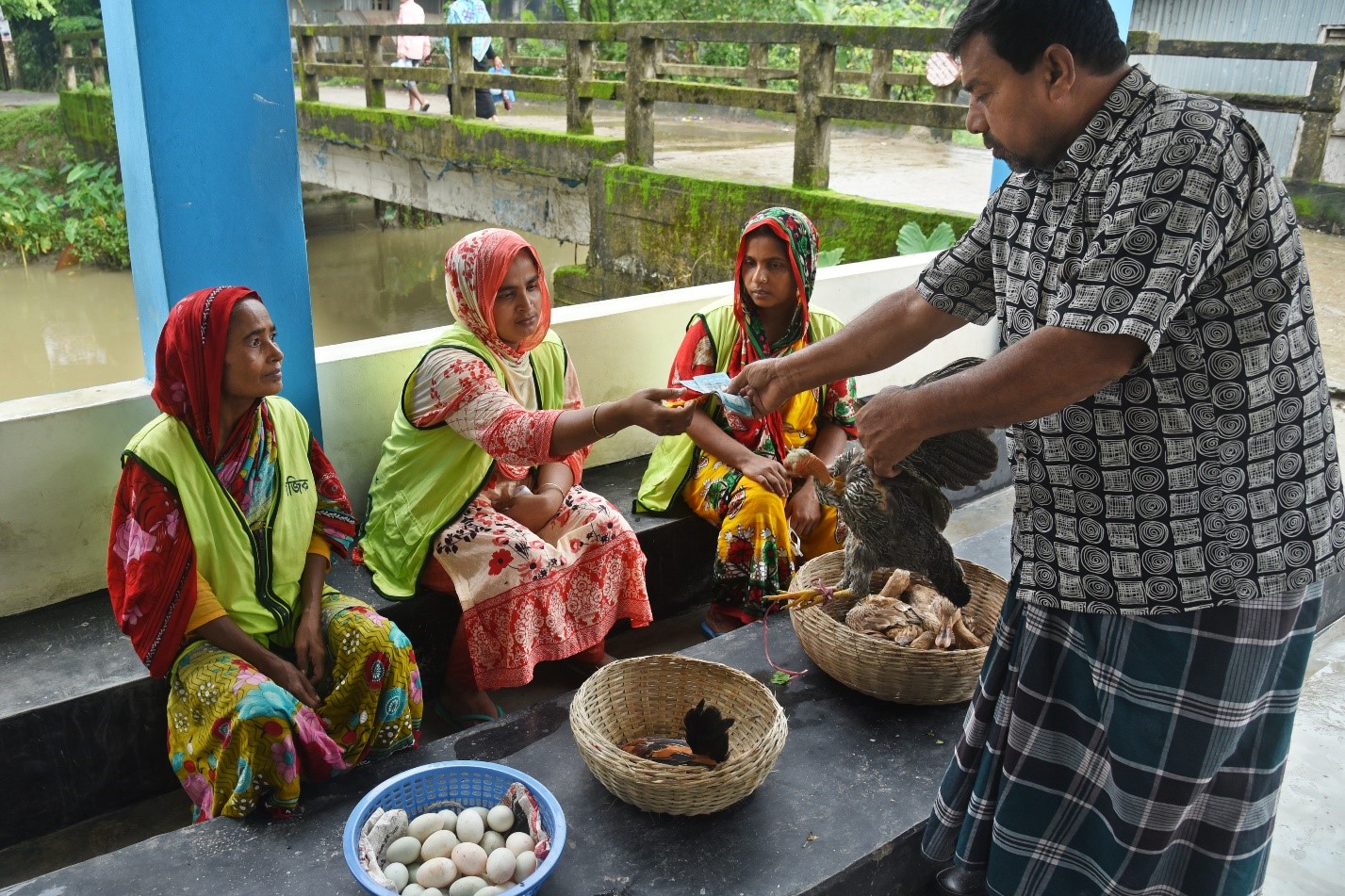Nearly a third of Bangladesh’s total land mass lies in its coastal zone, spanning 47,201 square kilometersaccording to an article by Bangladesh Coastal Zone Management Status and Future, 2019.This zone is home to about 35 million people, or 29% of the country’s population (Ahmad H, 2019Bangladesh Coastal Zone Management Status and Future. J Coast Zone Management).
These communities are heavily dependent on agricultural cultivation, working on small, fragmented lands as their primary source of income. However, this southern part of Bangladesh has faced some of the harshest realities of climate change in the last two decades. The region faceda significant rise in heat waves, cyclones, storm surges, salinity intrusion in wateretc. whichruined agricultural cultivations and left farmers helpless in the face of climate change.
“For years we faced constant suffering due to storms, cyclones, excess salinity intrusion in water etc.which destroyed our cultivations, our only source of livelihood. We did not know how to cope with it.” Says Nasima Begum a resident from Sonatola village, Burirchor Union, in climate prone Barguna district.
To support women like Nasima to break out of the impacts of climate change,LoGIC project is promoting local-led climate-adaptive livelihoods by providing a Community Resilience Fund (CRF) to vulnerable climate women.Local Government Initiative on Climate Change (LoGIC) project, is a joint initiative led by the Local Government Division (LGD) of the Ministry of Local Government, Rural Development, and Cooperatives, supported by the United Nations Capital Development Fund (UNCDF), United Nations Development Programme (UNDP), Swedish International Development Cooperation Agency (SIDA) and European Union (EU).
While climatic factors impact the livelihood of smallholder farmers in various ways, there are several non-climatic factors that also reduce their ability to become resilient. Limited access to the market is one such major factor. Often smallholder farmers, especially women producers face difficulty in landing a secured income source because they are unable to get a proper price for their produce due to not having access to the market.
“With support from LoGIC project we learned how to use climate adaptive livelihood technologies. Applying these technologies, we successfully harvested crops by working all day in the fields. However, our main challenge then was that we were not connected to the markets or retailers and could not sell our produce at a profitable rate.” Says Nasima. This barrier, especially if occurring recurrently may interrupt promotion of the climate adaptive livelihoods solution as many women farmers like Nasima may become discouraged from adhering to it.
In order to create market linkages for these remote climate vulnerable coastal women, LoGIC project has supported in construction of 12 women-friendly selling centers, known as “Shuhashini” in 10 Unions of 3Upazillas of Barguna Districtproviding a ‘Performance Based Climate Resilient Grant (PBCRG)’ to the Union Parishads as additional financing which complements the general grant resources provided the government. The PBCRG is targeted towards climate resilientinvestments, infrastructure, and better public services for the climate vulnerable residents.
To construct the Shuhashini sales centers, a co-financing mechanism was established between LoGIC project, Union Parishad,and local Bazar Committee where thePBCRG contributed Tk. 68 lac,Union Parishad and Bazar Committee allocated the necessary land valuationworth Tk. 17 lac.
“These lands are government owned ‘khash’ ands which the local government has handed over to create a market linkage and a platformforclimate vulnerable women farmers in this area. This has gained their confidence in undertaking climate adaptive livelihoods. Now, women no longer are left behind, this is their first step forwards towards empowerment and building climate resilience,” Md. AllauddinPotlu who is the Chairman of Kakchira Union Parishad, PatharghataUpazila, Barguna.
The Shuhashini sales centers have also created a synergy between the two financing channels of the LoGIC projectas these selling centers are used by the female beneficiaries of a Community Resilience Fund(CRF) grant provided by the project as direct support to promote local-led climate adaptive livelihoods with immediate benefits for their income. Women can now sell their agricultural products at a competitive price.
Each of the Shuhashini sales centers is a single storied building of 320 square feet area which can accommodate nearly 20 salespersons at a time. The sales centers have a toilet facility with water source, and breastfeeding corners to create an enabling and conducive environment and promote women farmers from availing it as a sales center. The sales centers are built on one to two decimal size khash land in strategic locations such as in and around the local bazar or growth centers.
A committee is established for each of the Shuhashina centers to ensure proper use and management. Nearly 1900 female CRF beneficiaries will be benefited from these sales centers which may facilitate their collective actions and contribute positively to strengthening the agricultural value chain.
“We sit together at the Shuhashini sales center with a wide variety of our produce ranging from vegetables, rice, fish, poultry, eggs. The first time we were very nervous about selling, however, each of us women have supported each other and used this platform to sell our produce. Now, we are confident and have made a profit from successfully selling our cultivation,” says Nasima.
These women beneficiaries of Barguna take their first step towards sustainable livelihoods. They are looking forward to reinvesting this profit to develop upcoming business plans to cultivate pumpkin, cucumber, corn, and sunflowers and sell them at the sales center.
LoGIC’s unique model has gained confidence of women like Nasima by facilitatingmarket linkages and networking thereby enabling them to further scale up their climate adaptive livelihood portfolio.By 2023, LoGIC aims to support about 4,00,000 vulnerable households in 72 unions of seven districts — Khulna, Sunamganj, Kurigram, Bagerhat, Barguna, Patuakhali and Bhola. The project is a joint initiative between European Union, Sweden, United Nations Capital Development Fund and United Nations Development Programme, led by Local Government Division (LGD) of the Ministry of Local Government, Rural Development, and Cooperatives.
